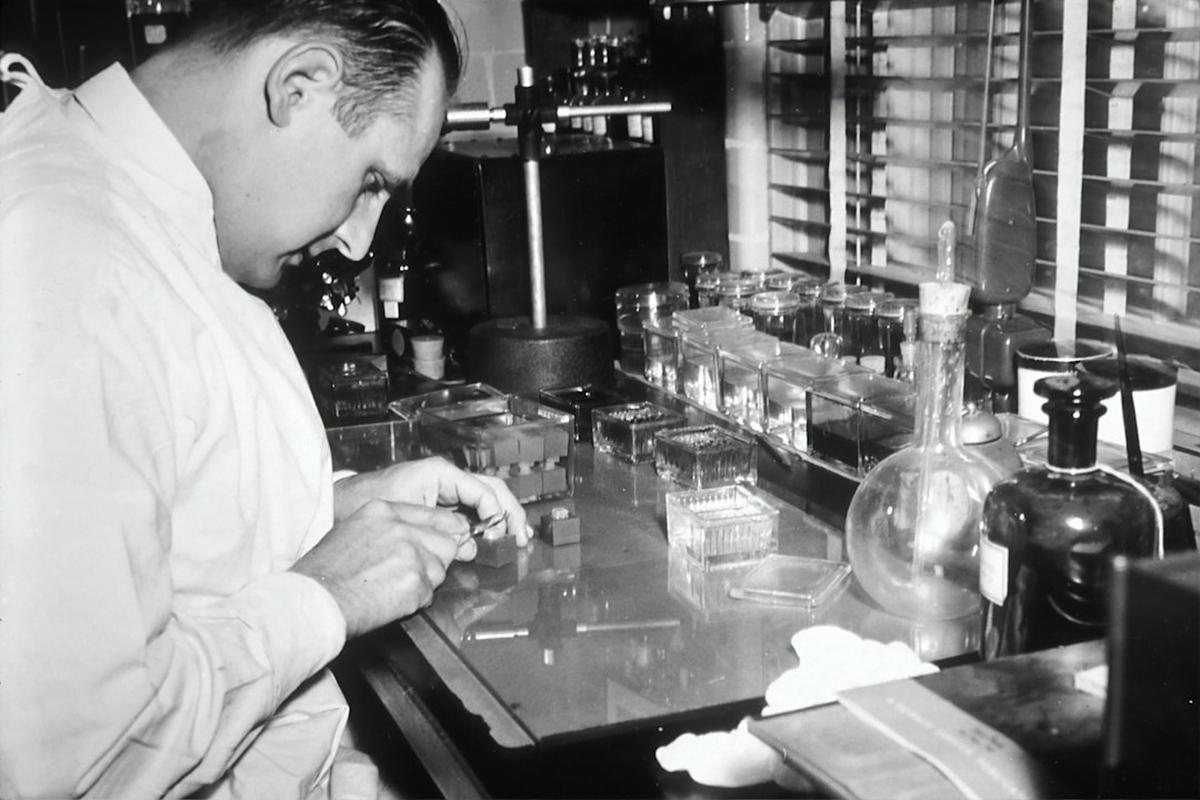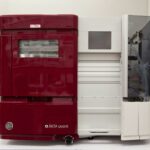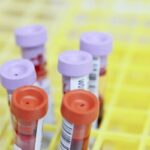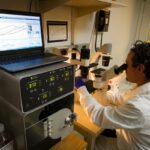DNA, the molecular blueprint of life, is a complex structure that encodes the genetic instructions used in the development and functioning of all known living organisms. DNA changes, also known as mutations, are alterations in the genetic material that can occur naturally or due to environmental factors. These changes can have significant impacts on an organism’s health, traits, and overall survival. But the question that has intrigued scientists for years is: can these DNA changes be reversed?
Understanding Genetic and Epigenetic Changes
Genetic Changes
Genetic changes are alterations in the DNA sequence that make up a gene. These changes can range from a single base pair mutation to a large segment of a chromosome. For instance, sickle cell anemia is caused by a single point mutation in the gene that codes for the beta-globin chain of hemoglobin.
Epigenetic Changes
On the other hand, epigenetic changes do not alter the DNA sequence but instead affect how cells read genes. These changes can be caused by modifications in DNA methylation or histone modification. For example, over-methylation of certain genes can lead to their silencing and contribute to the development of cancer.
Differences between Genetic and Epigenetic Changes
The primary difference between genetic and epigenetic changes lies in their permanence and heritability. Genetic changes are permanent and can be passed on to subsequent generations. In contrast, epigenetic changes can be reversible and are not always inherited.
The Concept of Reversibility in DNA Changes
Reversibility in Genetic Context
In the genetic context, reversibility of DNA changes is a challenging concept. Once a mutation occurs in the DNA sequence, it is usually permanent. However, nature has developed mechanisms to repair DNA damage, such as base excision repair, nucleotide excision repair, and mismatch repair. These mechanisms, however, are not always successful and can sometimes lead to further mutations.
Reversibility of Epigenetic Changes
In contrast, the reversibility of epigenetic changes is a well-established concept. Epigenetic marks are dynamic and can be added or removed by enzymes. This dynamic nature of epigenetic changes opens up the possibility of reversing these changes, potentially offering new avenues for treating diseases like cancer, Alzheimer’s, and cardiovascular diseases.
Gene Expression and Its Relation to DNA Changes
Definition of Gene Expression
Gene expression is the process by which the information encoded in a gene is used to direct the production of a functional product, usually a protein. The level of gene expression can significantly influence an organism’s characteristics.
How Gene Expression Influences DNA Changes
Gene expression can be influenced by both genetic and epigenetic changes. Mutations in the DNA sequence can alter the gene product, leading to altered gene expression. Similarly, epigenetic changes can affect gene expression by influencing the accessibility of the transcription machinery to the DNA.
The Impact of DNA Changes on Gene Expression
DNA changes can have profound impacts on gene expression. For instance, a mutation in a gene can lead to the production of a dysfunctional protein or no protein at all. Similarly, epigenetic changes can lead to the overexpression or underexpression of certain genes, contributing to disease development.
Scientific Studies on Reversing DNA Changes
Overview of Past Research
Past research has primarily focused on understanding the mechanisms of DNA repair and the reversibility of epigenetic changes. For instance, studies have shown that certain enzymes can add or remove epigenetic marks, suggesting the possibility of reversing these changes.
Current Developments and Breakthroughs
Recent developments in the field of genetics have led to breakthroughs in our understanding of DNA changes. For instance, the discovery of the CRISPR-Cas9 system has revolutionized the field of genetics, offering a tool to edit the DNA sequence and potentially reverse genetic changes.
Future Prospects and Research Directions
Future research is likely to focus on harnessing these tools for therapeutic purposes. For instance, scientists are exploring the use of CRISPR-Cas9 for treating genetic diseases. Similarly, drugs that can reverse epigenetic changes are being developed and tested.
Methods for Reversing DNA Changes
Natural Methods and Lifestyle Changes
Certain lifestyle changes and natural methods can potentially reverse epigenetic changes. For instance, a healthy diet, regular exercise, and stress management have been shown to influence epigenetic marks.
Medical Interventions and Treatments
Medical interventions for reversing DNA changes are primarily focused on genetic and epigenetic therapies. For instance, gene therapy aims to replace a faulty gene or add a new gene to a patient’s cells. Similarly, epigenetic drugs aim to reverse abnormal epigenetic changes.
Experimental Techniques and Their Potential
Experimental techniques like CRISPR-Cas9 offer the potential to reverse genetic changes. However, these techniques are still in their early stages and require further research to ensure their safety and efficacy.
Implications of Reversing DNA Changes
Potential Benefits for Human Health
Reversing DNA changes has significant potential benefits for human health. It could offer new treatments for genetic and epigenetic diseases, potentially improving the quality of life for millions of people.
Ethical Considerations and Controversies
However, the possibility of reversing DNA changes also raises ethical considerations. For instance, the use of gene editing tools like CRISPR-Cas9 has sparked debates about the ethics of altering the human germline.
Impact on Genetic Research and Medicine
The ability to reverse DNA changes could have a profound impact on genetic research and medicine. It could revolutionize our understanding of genetics and open up new avenues for treating diseases.
In Summary
The possibility of reversing DNA changes is a fascinating and complex field of study. While genetic changes are generally permanent, the dynamic nature of epigenetic changes offers the possibility of reversibility. Advances in genetic and epigenetic therapies, as well as gene editing tools like CRISPR-Cas9, are paving the way for potential treatments for genetic and epigenetic diseases. However, these advances also raise ethical considerations that need to be carefully addressed. As we continue to explore the intricacies of DNA, the possibility of reversing DNA changes remains an exciting prospect for the future of genetic research and medicine.
Frequently Asked Questions
What are DNA changes?
DNA changes, also known as mutations, are alterations in the genetic material that can occur naturally or due to environmental factors.
What is the difference between genetic and epigenetic changes?
Genetic changes are alterations in the DNA sequence, while epigenetic changes affect how cells read genes without altering the DNA sequence.
Can DNA changes be reversed?
While genetic changes are generally permanent, the dynamic nature of epigenetic changes offers the possibility of reversibility. Advances in genetic and epigenetic therapies, as well as gene editing tools like CRISPR-Cas9, are paving the way for potential treatments for genetic and epigenetic diseases.
What are the implications of reversing DNA changes?
Reversing DNA changes could offer new treatments for genetic and epigenetic diseases, potentially improving the quality of life for millions of people. However, it also raises ethical considerations that need to be carefully addressed.
What is gene expression and how does it relate to DNA changes?
Gene expression is the process by which the information encoded in a gene is used to direct the production of a functional product, usually a protein. DNA changes can have profound impacts on gene expression, leading to altered characteristics in an organism.
What are some methods for reversing DNA changes?
Methods for reversing DNA changes include lifestyle changes, medical interventions like gene and epigenetic therapies, and experimental techniques like CRISPR-Cas9.
References
- Jones, P. A. (2012). Functions of DNA methylation: islands, start sites, gene bodies and beyond. Nature reviews. Genetics, 13(7), 484–492. https://doi.org/10.1038/nrg3230
- Deans, C., & Maggert, K. A. (2015). What do you mean, “epigenetic”? Genetics, 199(4), 887–896. https://doi.org/10.1534/genetics.114.173492
- Doudna, J. A., & Charpentier, E. (2014). Genome editing. The new frontier of genome engineering with CRISPR-Cas9. Science (New York, N.Y.), 346(6213), 1258096. https://doi.org/10.1126/science.1258096
- Egger, G., Liang, G., Aparicio, A., & Jones, P. A. (2004). Epigenetics in human disease and prospects for epigenetic therapy. Nature, 429(6990), 457–463. https://doi.org/10.1038/nature02625
- Lander, E. S. (2016). The Heroes of CRISPR. Cell, 164(1-2), 18–28. https://doi.org/10.1016/j.cell.2015.12.041








